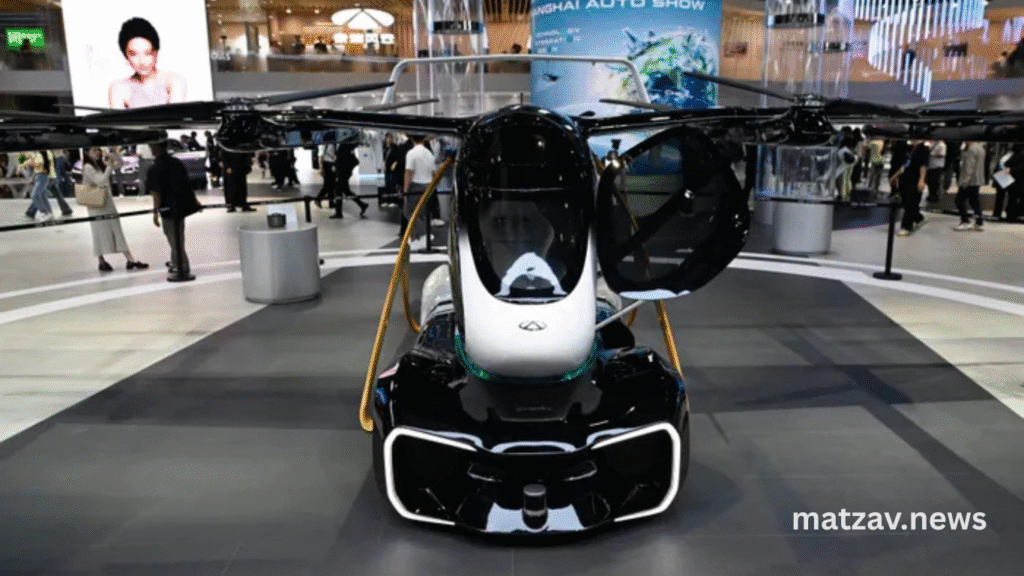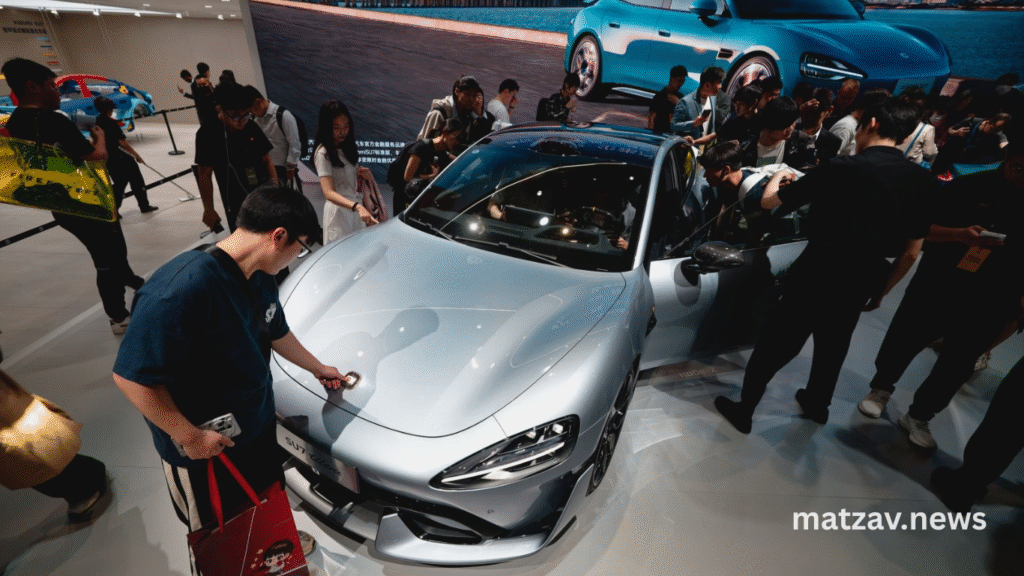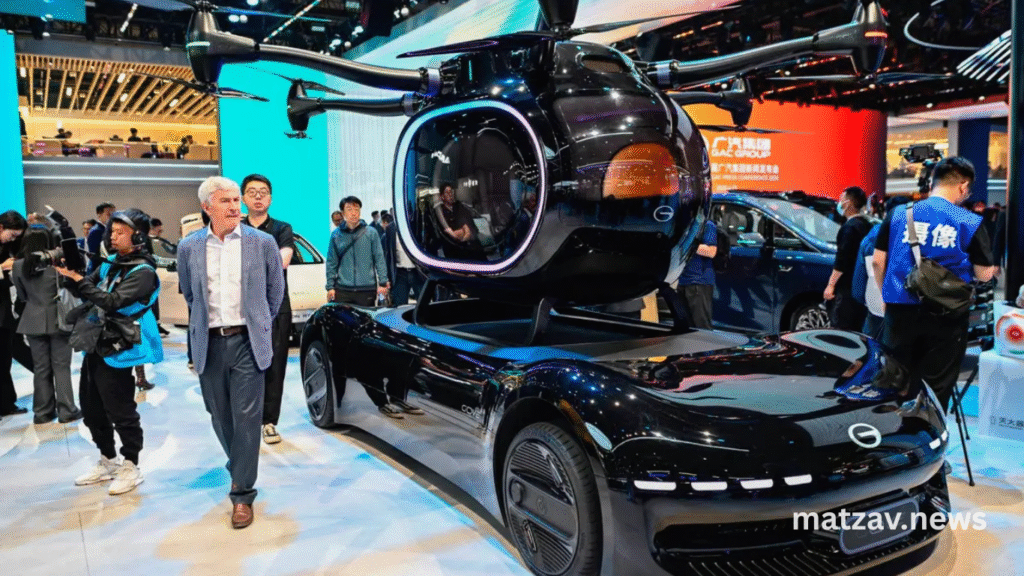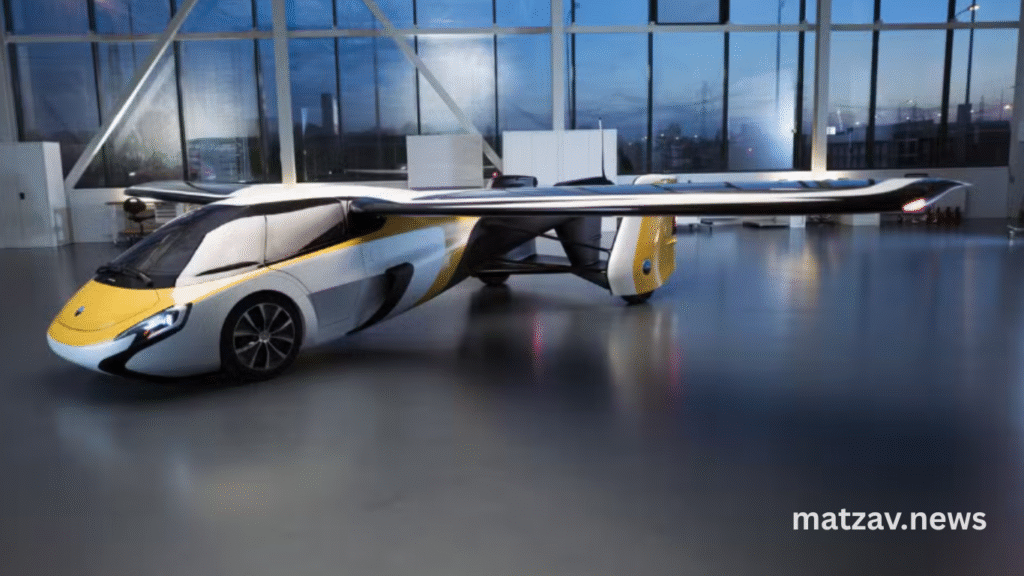The global automotive industry is undergoing a transformative shift, and nowhere is that more evident than at Auto Shanghai 2025. This year’s edition of China’s premier auto show has become the epicenter of electric vehicle (EV) innovation and futuristic mobility concepts. Drawing participation from the world’s leading automakers and tech companies, Auto Shanghai 2025 is not just a car show—it’s a glimpse into the future of transportation. Among the dazzling displays of sleek electric cars and cutting-edge automotive technology, flying cars stole the spotlight, signaling the dawn of a new era in mobility.
In this article, we’ll explore the key highlights from Auto Shanghai 2025, the emergence of flying cars as a serious mobility solution, advancements in EV technology, and what this means for the global automotive industry moving forward.
A Historic Event in the World’s Largest EV Market
China has solidified its position as the world’s largest EV market, and Auto Shanghai serves as the perfect platform to showcase the country’s ambitions. This year’s event welcomed over 1,000 exhibitors, with hundreds of thousands of visitors flooding the expansive exhibition halls. Major automakers like Tesla, BYD, NIO, Mercedes-Benz, and Toyota shared space with up-and-coming startups and tech giants like Huawei and Xiaomi, all unveiling their latest electric and autonomous innovations.
China’s growing influence in shaping the future of the automotive world was unmistakable. Government support for new energy vehicles (NEVs), expanding charging infrastructure, and consumer incentives are all driving rapid adoption. Auto Shanghai 2025 served not only as a product launchpad but also as a testament to China’s strategic focus on sustainability and innovation.
Flying Cars Take Center Stage
Perhaps the most talked-about revelation at Auto Shanghai 2025 was the introduction of accurate, functional flying cars. What once seemed like science fiction is now becoming a reality, thanks to the convergence of EV technology, autonomous flight systems, and regulatory progress.

XPeng AeroHT’s Breakthrough
Leading the charge is XPeng AeroHT, the aviation division of Chinese EV manufacturer XPeng Motors. Their latest model, a fully electric flying car capable of vertical takeoff and landing (eVTOL), was demonstrated both physically and through immersive simulations. The vehicle, which transforms from a road-capable EV into an aerial vehicle, is designed for urban air mobility (UAM), aiming to ease congestion and reduce commute times in mega-cities.
XPeng AeroHT’s prototype uses foldable rotor arms and advanced AI-based navigation systems. With a range of 50 km in flight mode and 200 km on the ground, the vehicle blends the best of both worlds. Analysts believe this dual-mode mobility concept could revolutionize urban transportation.
Other Players in the Sky
While XPeng dominated headlines, other companies showcased their versions of flying cars and eVTOL aircraft. Hyundai’s Supernal division presented a luxurious 5-seat air taxi, while EHang revealed updated versions of their autonomous aerial vehicles for logistics and passenger transport.
These vehicles are no longer just concepts. Many have already completed successful test flights and are awaiting certification. Regulatory bodies in China and beyond are working with manufacturers to define standards, air traffic systems, and safety protocols for this emerging category.
The New Wave of EV Innovation
While flying cars grabbed the headlines, ground-based EVs also saw significant innovations. Here are the standout themes from Auto Shanghai 2025:
Solid-State Batteries
Battery technology took a giant leap forward, with multiple companies announcing solid-state battery integration in upcoming models. Unlike traditional lithium-ion batteries, solid-state batteries offer higher energy density, faster charging, and improved safety. Toyota, CATL, and NIO all presented vehicles or prototypes equipped with these next-generation power sources, promising ranges of over 1,000 km on a single charge.
Advanced Driver Assistance Systems (ADAS)
Autonomous driving technology saw significant progress. Tesla unveiled its new Full Self-Driving (FSD) hardware optimized for the Chinese market, while Huawei and Baidu presented their Level 4 self-driving platforms designed for urban environments. These systems use a fusion of LIDAR, radar, and AI algorithms to deliver safer, more efficient driving experiences.
Smart Connectivity
Connectivity has become a pillar of the modern EV. Automakers are integrating 5G, AI, and IoT technologies into their vehicles to enhance driver experience and vehicle intelligence. In-car digital assistants, predictive maintenance alerts, and intelligent navigation are just a few of the features that make today’s EVs feel like smartphones on wheels.

Global Automakers Embrace Electrification
- International automakers used Auto Shanghai 2025 as a launchpad to strengthen their foothold in China’s competitive EV market.
- Mercedes-Benz introduced its electric G-Class SUV and Vision EQXX concept, boasting over 1,200 km of range and a solar-powered auxiliary system.
- Toyota showcased its new bZ series of electric cars, which are tailored specifically for Chinese consumers and emphasize efficiency and affordability.
- Volkswagen revealed the ID.9, a luxury electric sedan developed in collaboration with its Chinese partner, SAIC Motor.
- These announcements highlight a key trend: legacy automakers are now focusing on the shift from internal combustion engine (ICE) models to all-electric platforms.
Startups and Disruptors Make Their Mark
- While the giants commanded large booths and headlines, EV startups also made a significant impact at Auto Shanghai 2025.
- NIO unveiled its flagship ET9 luxury sedan, which features a stunning digital cockpit, Level 4 autonomy, and swappable solid-state battery packs.
- Li Auto launched its L9 Max, a family-oriented SUV with a built-in projector system and 800V charging capability.
- Leapmotor introduced budget-friendly models aimed at first-time EV buyers, reflecting the democratization of electric mobility.
- These disruptors are not only innovating faster but are also aligning with younger, tech-savvy consumers in China and abroad.
Government Support Fuels Innovation
One of the reasons for China’s leadership in the EV revolution is robust government support. At Auto Shanghai, several policymakers emphasized their continued commitment to green mobility. This includes:

- Incentives and tax breaks for NEV purchases
- Expansion of the national charging infrastructure network
- Subsidies for R&D in battery and autonomous technologies
- Creation of urban air mobility zones for eVTOL testing
- This public-private synergy accelerates innovation, lowers consumer costs, and promotes rapid deployment of new technologies.
- The Road Ahead: Challenges and Opportunities
Despite the excitement, the path forward isn’t without obstacles. Here are the key challenges facing the new EV era:
Infrastructure Readiness
Widespread adoption of EVs and flying cars will require massive infrastructure upgrades. Charging stations, battery swap networks, vertiports for eVTOLs, and intelligent traffic management systems must be scaled to match demand.
Regulatory Hurdles
While some governments are proactively setting standards for autonomous and aerial mobility, regulatory clarity remains a barrier. International harmonization is needed for air traffic control, safety certification, and insurance frameworks.

Consumer Trust
Winning consumer trust in autonomous driving and flying vehicles is critical. Education, public demonstrations, and rigorous safety testing will play key roles in adoption.
Environmental Impact
Although EVs and eVTOLs are touted as green alternatives, their full lifecycle emissions and rare earth material sourcing must be managed responsibly to ensure genuine sustainability.
Conclusion
Auto Shanghai 2025 marks a pivotal moment in the evolution of the global mobility landscape. The fusion of electric vehicles, autonomous technologies, and urban air mobility points toward a future that is cleaner, smarter, and more connected.
Flying cars transitioning from concept to reality captured the imagination of millions. At the same time, advancements in solid-state batteries, AI-driven systems, and smart connectivity reaffirmed that the EV revolution is just beginning.
